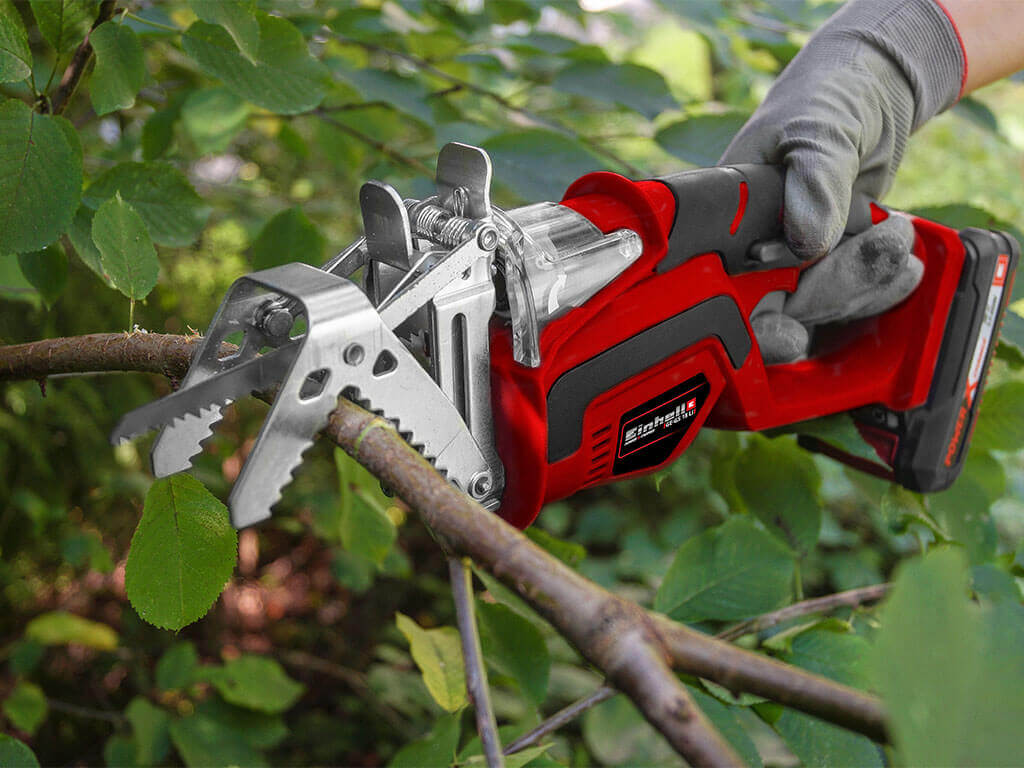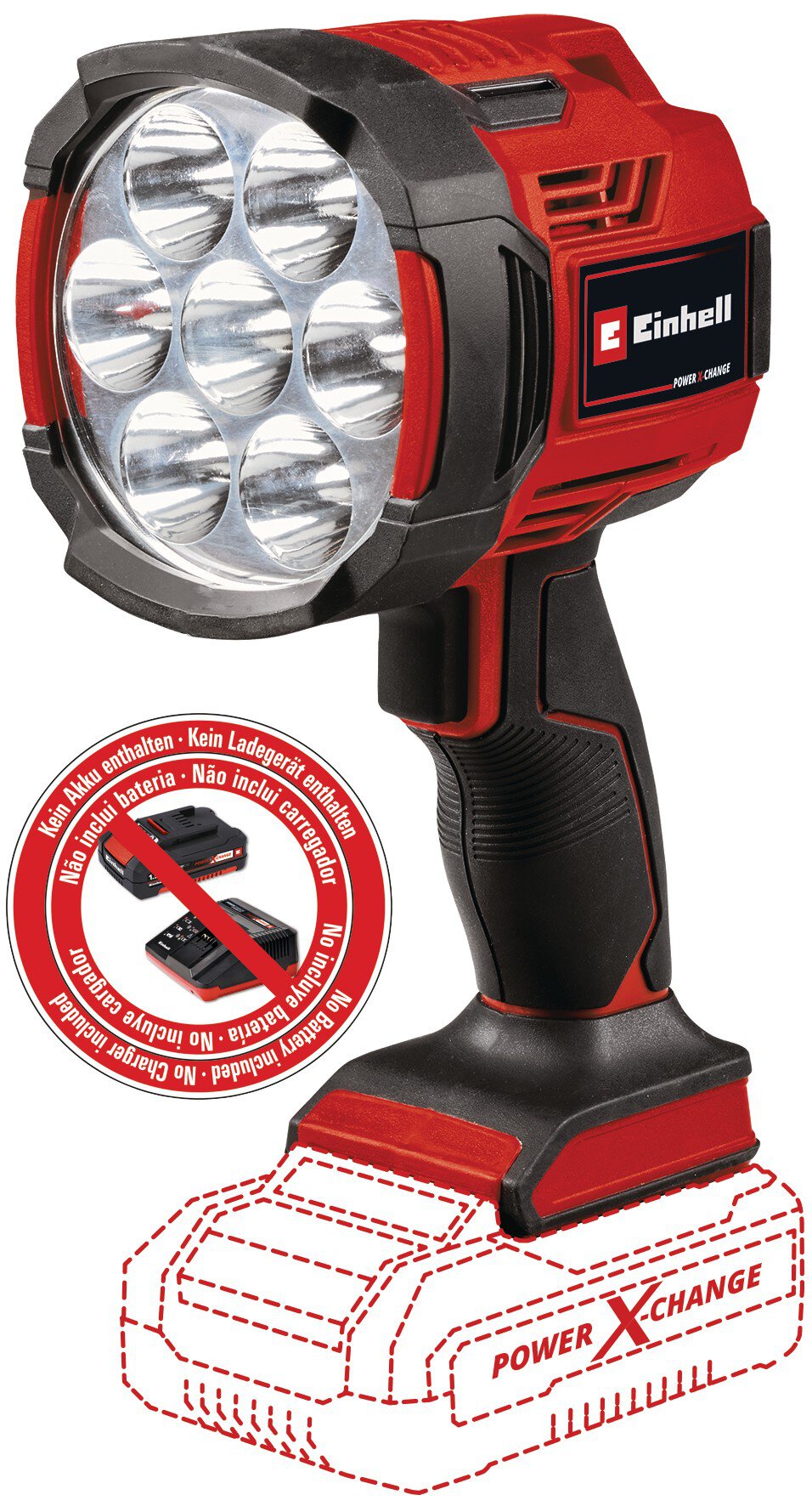Water in the basement and fallen trees – these devices are your emergency equipment for water & storm damage
Floods, heavy rain, heavy storms and strong thunderstorms: Especially in the summer months, violent storms occur again and again. It is not uncommon for these weather events to bring nasty surprises such as uncovered roofs, uprooted trees, floods and flooded basements. The major disasters are dealt with by the fire brigade, technical relief agencies and other organisations. However, less serious damage can often be repaired by yourself. You can find out in our blog what devices to use for these situations and what you should pay attention to.

Overflowing basement after a storm? This needs to be sorted immediately!
What have we learned from previous flood disasters? Water always finds its way through. Whether in heavy rain, through a burst pipe or overflowing streams: basements full of water and water damage in the building are often the result. If the water is very high, you should call the fire brigade, which can pump it out with a large device. However, if the water is only limited, you can also pump the water out of your home and basement yourself. But before you get started, there are a few things you should take into account. A step-by-step guide:
- Observe the water level: Wait until rain and thunderstorms are over and no more water enters. You should only start pumping out the basement when the water level is lower on the outside than on the inside, because the water presses against the wall from the outside. The water collected inside compensates for this pressure. If you start pumping, the pressure from the outside can damage the masonry of the building, which can cause cracks.
- Turn off the power: In all disasters and clean-up work, you should first and foremost always pay attention to the safety of yourself and others. Property can be replaced, but human life cannot. So, before you enter your basement, you must switch off the electricity, because water and electricity often lead to deadly electric shocks. If the power box is in the basement, is under water or is only accessible through the water, you should notify your energy supplier or call the fire brigade.
- Document the damages: If the power is turned off, you can take pictures and videos of the flooded basement and the damage caused. This allows you to create evidence that you can submit to insurance companies, if necessary. Depending on the insurance, you can also clarify what to do next over the phone, i.e. what damage you can and should remedy independently.
- Pumping out: Depending on how much water has accumulated in the basement, you can start pumping out with the help of a suitable pump. However, you should first be sure that the water was not contaminated by pollutants previously stored in the basement, such as fuel oil, paints, etc. If this is the case, you should inform the fire brigade, because they have means to bind dangerous substances, and thus prevent them from getting into the sewer system.
- Remove sludge: With the help of a waste water pump or a special sludge extractor, you can pump water and sludge directly from the basement. If there is any residue remaining, you should remove it as soon as possible and keep it moist during the process. Once the sludge has dried, it becomes a hard, heavy mass that is difficult to remove.
- Tidying up and disposal: Before you can dry the basement room, it is important to clear out any damp and damaged items. If you would like to report certain damages to your insurance company, you should make sure to keep the damaged items, to be on the safe side.
- Drying: To prevent mould from forming, the damp basement must dry thoroughly so that no moisture remains on and in walls and floors.

You can use these devices for pumping out and drying:
- Petrol-powered water pumps: With an Einhell petrol water pump such as the GE-PW 46 or GC-PW 16, large quantities of water – up to 23,000 litres per hour – can be pumped out without a power connection.
- Submersible waste water pumps: Depending on the model, Einhell submersible waste water pumps such as the GC-DP 9040 N or the GC-DP 1340 G pump up to 23,000 litres per hour. The GE-DP 900 Cut, for example, is equipped with a cutting mechanism system for comminuting solids such as sludge lumps. If most of the water was pumped out of the basement with powerful devices, you can also use the flat suction pump such as the GE-DP 7330 LL ECO or the GC-DP 7035 LL to pump the remaining water down to 1 mm residual water level.
- Wet/dry vacuum cleaners: The Einhell wet/dry vacuum cleaners are suitable for removing the remaining water. Depending on the model, these have very large collection containers. The containers in models such as the TE-VC 2350 SACL can hold up to 50 litres of volume (corresponding to 37.5 litres of water filling volume). Here you can also choose between battery and cable models.
- Power generators: When pumping out the basement, the power in the house should be off. A generator is helpful so you can still use wired pumps and other electrical appliances. This generator and the required petrol are best stored in rooms that cannot be flooded to prevent the device from getting into contact with moisture. You should not use a wet generator under any circumstances, as this is extremely hazardous. In addition, generators can only be installed outdoors because of the exhaust gases. So, wait until the rain is over and make sure not to place the generator in a puddle.
- Tip: If after the thunderstorm or because of the water damage the power has failed or is switched off, it is convenient to have cordless lamps in the house. The Einhell lamps TE-CL 18/2500 LiAC and TE-CL 18/2000 LiAC impress not only with strong radiance, but also with a long runtime thanks to Power X-Change batteries.
Lightning and storm damage in the garden
A strong storm sweeps over your property and sweeps away anything that has not been nailed down or protected from the wind. Broken branches and fallen trees adorn numerous streets and gardens. While the fire brigades are busy clearing trees from roads, you can work in your garden yourself, provided you have the suitable tools. If the storm caused damage to furniture, cars, etc.; for example, due to a fallen tree, you should again document these with photos and videos so that you can discuss the damage with your insurance company.
After heavy rain and storms, you are always well equipped with cordless and petrol devices, because you do not need a working power supply with them. With a petrol or cordless chainsaw, fallen trees and thick, damaged branches can be cut and sawed off, in order to then dry and be used as firewood, for example. You can also reach high, kinked branches with pole saws, and you can cut off smaller branches within reach with a cordless pruning saw.

After the storm is before clean-up
Leaves, dirt and sludge residue: Paths, yards and terraces often look like a battlefield after a storm. You can ease the cumbersome clean-up work with Einhell's powerful devices. With cordless leaf vacuums, you can collect dry leaves and dirt directly in the collection sack to dispose of it in a targeted manner. With the powerful blowing power of cordless leaf blowers, you can, for example, also blow wet and moist leaves or small stones out of the way. High-pressure cleaners help you clean dirty floors, garden furniture, cars, etc. and also remove sludge residue. The cordless surface brush PICOBELLA, combined with the matching brush, even removes deep-seated dirt. With the cordless push sweeper, you can clean the yard, terrace and pavement in the last step. However, make sure that the floor is completely dried when using the sweeper!

Summary: Quickly repair water and storm damage with the right tool
Many of the devices mentioned should be part of the standard tool kit for amateur gardeners and homeowners anyway and are a helpful support not only in everyday life, but also after storms. Because once the catastrophe has happened, the basement has filled with water and the garden has been devastated, quick action saves you money. And even if you were lucky and your own belongings were spared, other people may need help. Above all, one thing has become clear after past floods: In difficult situations, people move together and actively help with the clean-up work. This is precisely where the Einhell water pumps, power generators, wet/dry vacuum cleaners, chainsaws, sweepers and the like can help.


